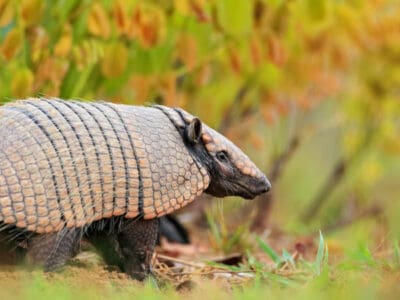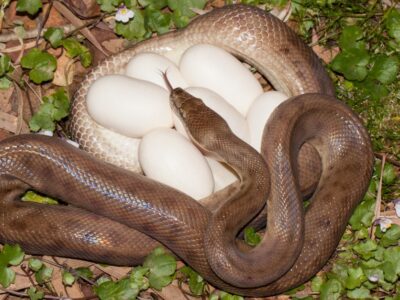Prairie Dog
Prairie dog “towns” can consists of hundreds of individuals
Advertisement
Prairie Dog Scientific Classification
Read our Complete Guide to Classification of Animals.
Prairie Dog Conservation Status
Prairie Dog Facts
- Prey
- Roots, grasses, seeds, and insects
- Name Of Young
- Pups
- Group Behavior
- Colony
- Family units
- Fun Fact
- Prairie dog “towns” can consists of hundreds of individuals
- Estimated Population Size
- Unknown
- Biggest Threat
- Hunting and loss of habitats
- Most Distinctive Feature
- The sharp digging claws
- Other Name(s)
- Ground squirrel
- Gestation Period
- 1 month
- Litter Size
- 3-8 pups
- Habitat
- Prairies
- Predators
- Coyotes, badgers, ferrets, foxes, and birds of prey
- Diet
- Omnivore
- Type
- Mammal
- Common Name
- Prairie Dog
- Number Of Species
- 5
- Location
- Western United States and Mexico
Prairie Dog Physical Characteristics
- Color
- Brown
- Grey
- Black
- White
- Tan
- Skin Type
- Hair
- Top Speed
- 35 mph
- Lifespan
- 3-4 years on average
- Weight
- 0.5-1.8kg (1-4lbs)
- Height
- 15-18cm (6-7.3in)
- Length
- 30-40cm (12-16in)
- Age of Sexual Maturity
- 1 year
- Age of Weaning
- 1-2 months
View all of the Prairie Dog images!
The prairie dog sits at the center of the entire ecosystem of the American prairie.
Despite their name, the five species of prairie dogs are not canines at all, but rodents. They were named for their dog-like barking sounds. They are considered to be the keystone species of the western plains. Their burrows help to churn the soil and promote water penetration. Their nitrogen-rich dung is a high-quality fertilizer that enriches the soil. And they provide a stable food source for predators. Experts believe that the loss of prairie habitats and the disappearance of prairie dog populations are linked together.
3 Incredible Prairie Dog Facts!
- The first description of the prairie dog came from the expeditions of Lewis and Clark in 1804. Lewis described it as resembling a barking squirrel.
- One of the more amazing facts is that prairie dogs are organized into large colonies called towns. The largest prairie dog town ever discovered was 25,000 square miles large and had about 400 million inhabitants.
- The black-tailed prairie dog and Mexican prairie dog exhibit a behavior known as a jump-yip in which it jumps up into the air and emits a loud yipping sound. This behavior is contagious and soon spreads through the rest of the colony. It is not quite clear why they do this, but this adaptation might be a kind of all-clear signal for predators. Another explanation is that it helps prairie dogs collect information about the watchfulness of nearby colony mates.

Prairie Dog Scientific Name
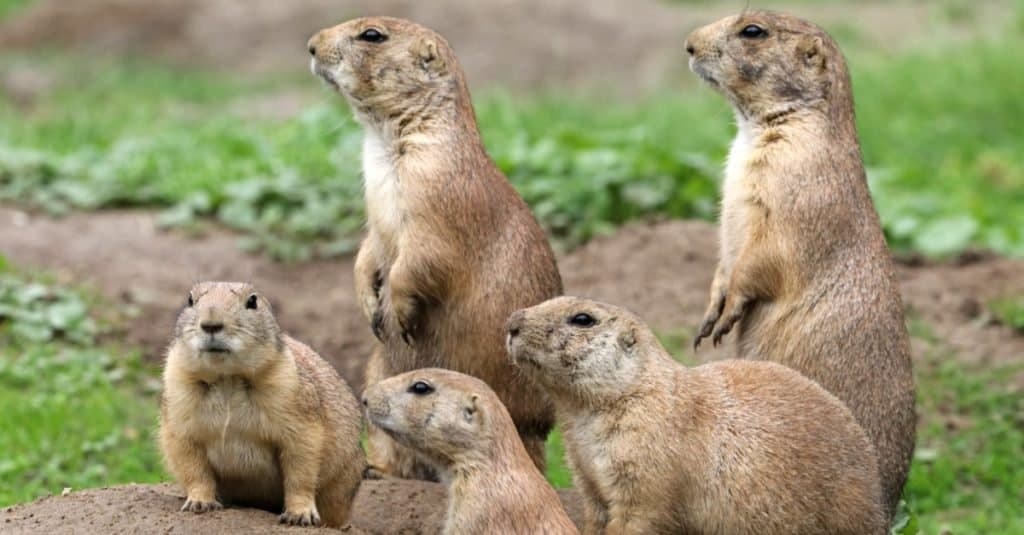
Prairie dogs are a species of short-tailed, ground-dwelling squirrel
©Edwin Butter/Shutterstock.com
The scientific name for the prairie dog genus is Cynomys. This appears to be the combination of two Greeks words that roughly translate to mean “dog mouse.” The genus belongs to the family of Sciuridae along with all other types of squirrels.
Appearance
These animals have a generally squirrel-like appearance. It is characterized by a small but stout body, rounded ears, a short tail, and strong digging claws. The short and coarse coat of fur is a yellowish-tan color with hints of brown and red. The tail is also covered in black, white, or gray fur. Weighing between 1 and 4 pounds, the prairie dog is about the same size as a rabbit. Its body measures 12 to 16 inches, while the tail adds another 1 to 5 inches. Males tend to be slightly larger than females on average, but their appearance is otherwise similar except for obvious sexual differences.
Types
Five species of prairie dog currently exist:
- Black-tailed prairie dog: Named for the black tips of their tails, these rodents do not hibernate during winter but instead enter torpor at nightfall.
- Gunnison’s prairie dog: Recognizable by their tails which often have light gray tips, these ground squirrels are also the only prairie dogs that come with 40 pairs of chromosomes. All other subspecies have 50 pairs.
- Mexican prairie dog: Native to Mexico as its name suggests, this rodent was considered a pest and a deterrent to agriculture and cattle husbandry. As a result of extermination campaigns against it, this subspecies currently occupies less than 4% of its former range.
- White-tailed prairie dog: Its distinguishing features are dark blotches on either cheek above and below both eyes and a white tail. This mammal lives at higher elevations compared to its closest relatives.
- Utah prairie dog: Their small sizes, multicolored fur, and dark eyebrows set them apart. Due to their IUCN status as Endangered, they are currently a protected species.
Evolution
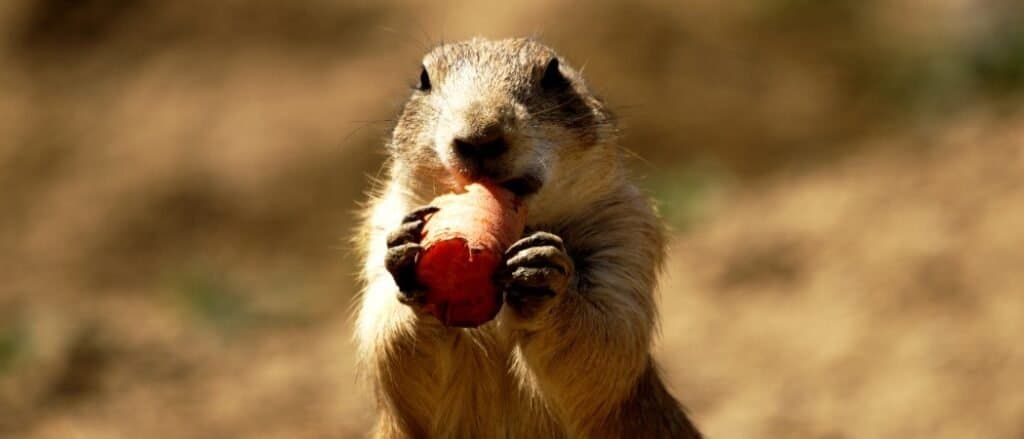
Prairie dogs’ distant ancestors are believed to have lived in North America about 40 million years ago
©MichaelL/Shutterstock.com
Prairie Dogs belong to the vast rodent family Sciuridae, or squirrels. The evolutionary tale of this extensive group is believed to have begun in North America with the earliest fossil evidence dating as far back as 40 million years ago during the late Eocene.
Prairie dogs belong to one of the main five families of the species, the Xerinae which consists of squirrels that are terrestrial in nature and make their homes in burrows dug in the earth. Within this subgroup, prairie dogs also belong to the tribe Marmotini alongside other species including chipmunks, groundhogs, marmots, and susliks.
Behavior
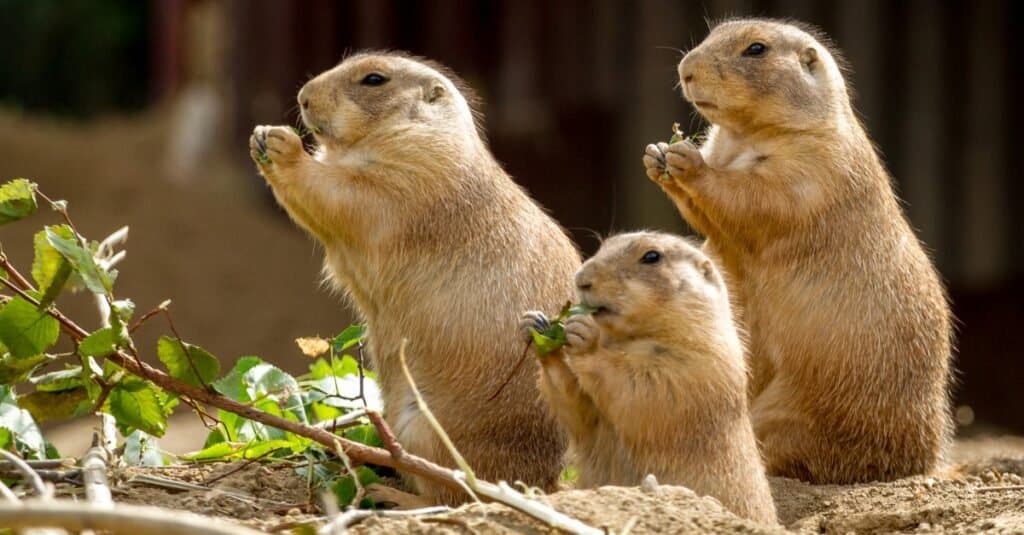
Prairie dogs are intelligent animals with complex communication. They have a range of different barks and chirps for communicating different messages.
©Marie Dirgova/Shutterstock.com
The social life of these animals revolves around the colony (the technical term for it is a coterie or clan, depending on the species). The basic unit of the colony is the family, which consists of one or two males, a few females, and their offspring. A single “town” of prairie dogs may consist of hundreds of members divided into multiple family units, all independent but working together. Each member contributes to the success of the family or colony by hunting for food, guarding the den, and grooming one another.
In order to communicate, these animals have evolved numerous vocal adaptations. The familiar barking sound for which they’re known is actually an alarm call. When the animal spots a predator, it emits a loud call that sends the rest of the colony scurrying for cover. Prairie dog communication is quite complex. Some studies suggest that they can convey precise details about where the intruder comes from and what it looks like. It can even distinguish between humans and hawks without a problem. Touch is another important aspect of prairie dog communication. Nuzzling and even kissing serve to reinforce relationships and bonds between members of the same family or group.
These animals construct some of the most impressive homes in the animal kingdom. These homes consist of underground burrows, tunnels, and chambers with distinctive sleeping quarters, nurseries, and toilets. Each of the six entrances to the burrow is marked by a volcano-shaped mound. These mounds serve as a kind of listening post from which a member of the colony can guard against nearby predators. There is generally one burrow per family. However, these burrows can form an entire town spanning an average of 247 acres.
In a harsh environment of scarce resources, these animals have multiple strategies for survival. When winter arrives, the animal has the ability to hibernate or slow down its metabolism to conserve energy. They can go for very long periods of time without any food or water. Some species like the white-tailed prairie dog will also deliberately kill other ground squirrels in order to eliminate competitors and maximize the survival odds of their own offspring. Given its herbivorous lifestyle, the animal obviously does not eat the meat from their fallen foe but instead leaves it for scavengers to pick over.
Habitat
These animals can be found all across the plains, valleys, and plateaus of the western United States and parts of Mexico. There are five species, each one corresponding to a different geographical region: Gunnison’s prairie dog can be found in the southwestern United States, the black-tailed prairie dog in the central United States, the white-tailed prairie dog in Wyoming, Utah, and Colorado, the Mexican prairie dog in the northeastern states of Mexico, and the Utah prairie dog in the state that bears its name.
Predators and Threats
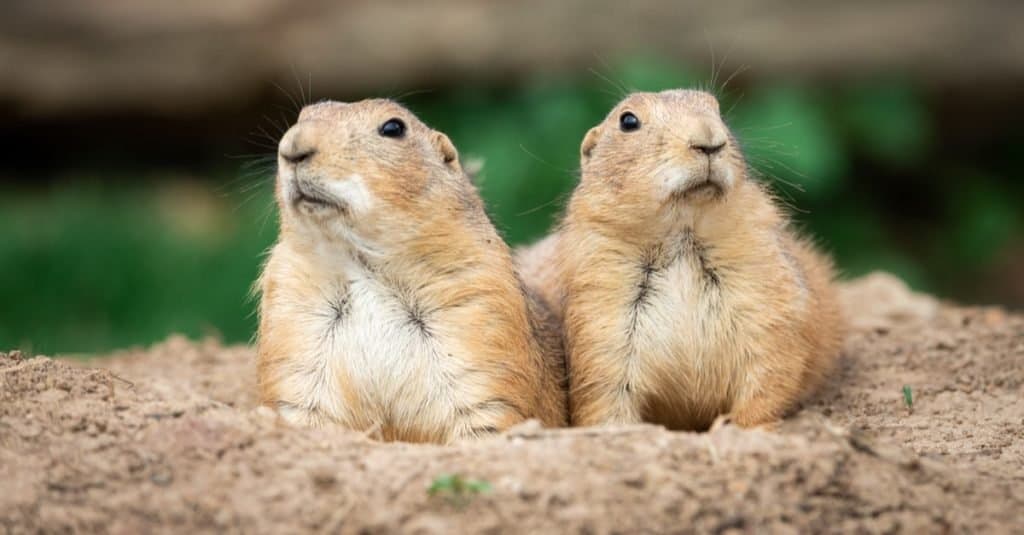
Humans constitute the main threat to prairie dogs’ wellbeing
©AB Photographie/Shutterstock.com
These animals face many threats in the wild. It is always at risk of death from natural predators and even other prairie dogs. But the main threat to its existence comes from human activity. The conversion of prairies into farmlands, pastures, and towns has reduced the full extent of the animal’s natural habitats. This has been exacerbated by the fact that many people regard them as pests for their destructive digging habits and deliberately hunt them down. It’s estimated that they lost about 95% of their natural territory in the 20th century. Another unexpected threat comes from the ancient scourge of the bubonic plague, which can decimate an entire colony and also spread to other animals, including humans. As a result of all these threats, the prairie dog numbers have fallen about 98% from their peak.
What eats the prairie dog?
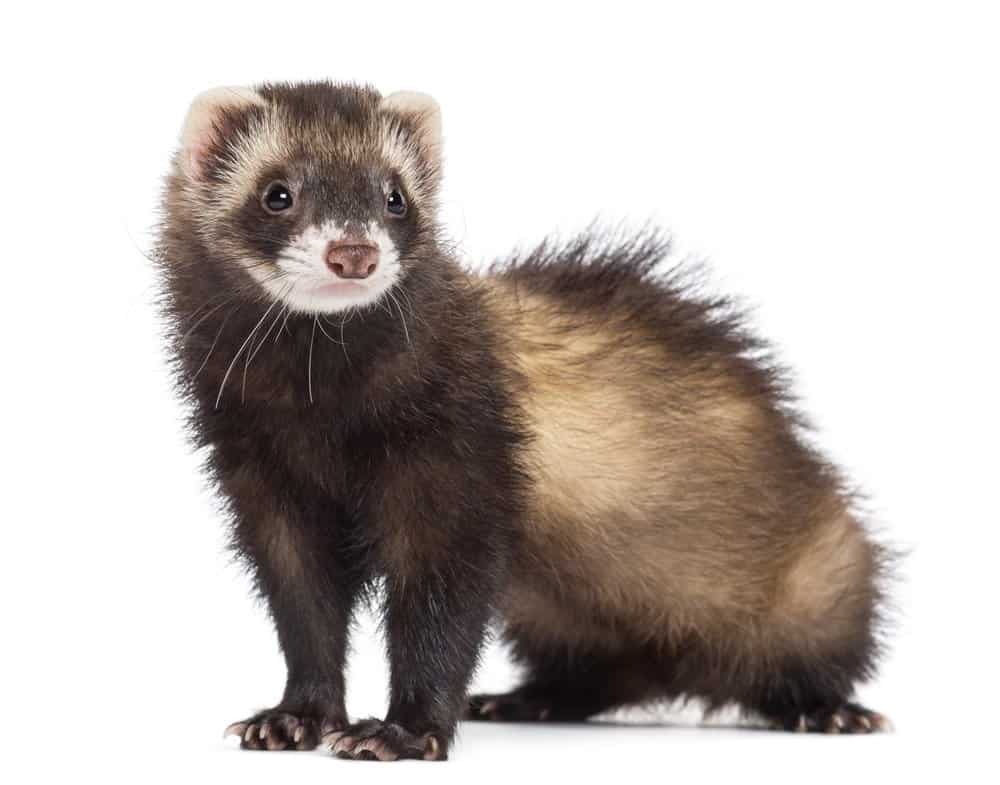
Ferrets are one of several creatures which consider prairie dogs a tasty meal
©Eric Isselee/Shutterstock.com
As a vital part of the local food chain, the animal is a source of food for numerous predators. It is preyed upon by ferrets, foxes, badgers, coyotes, eagles, and hawks, which raid the nests or take the prairie dog by surprise.
What does the prairie dog eat?
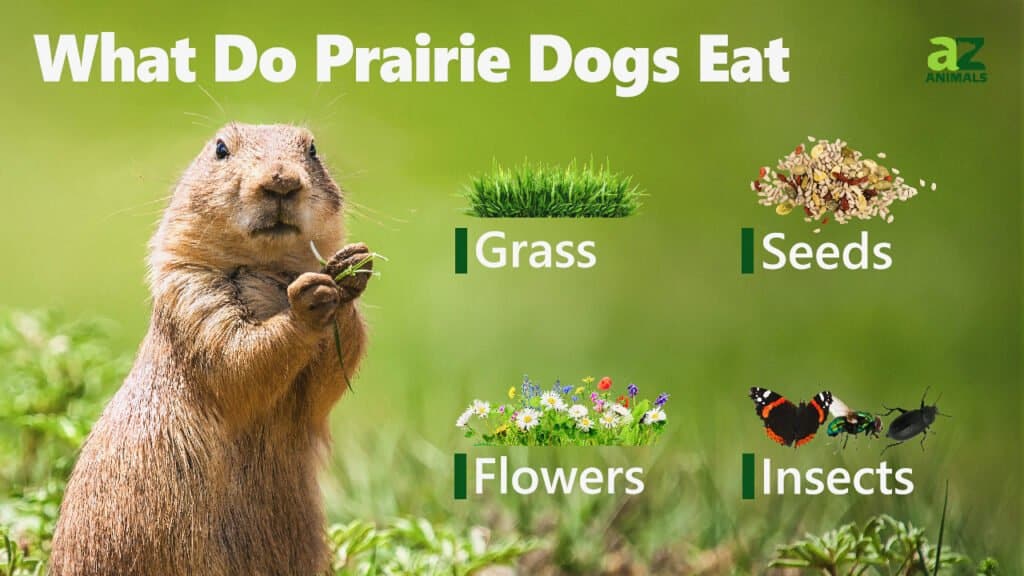
These animals come out during the day to feed on roots, grasses, buds, and seeds. Some species will supplement their diet with insects.
Reproduction and Life Cycle
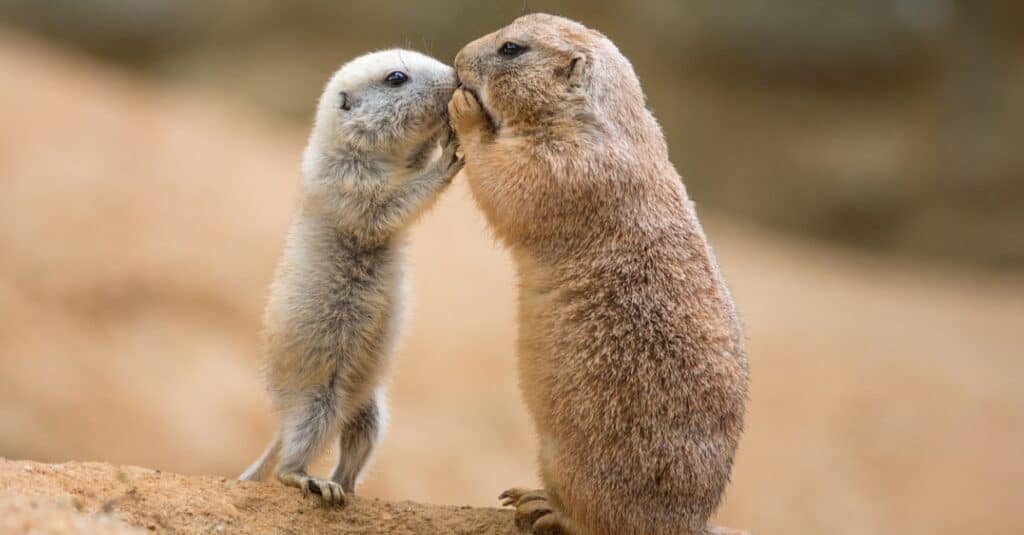
Female prairie dogs provide direct care to their young while their male mates patrol the premises and keep a sharp lookout for any possible danger
©Nick Fox/Shutterstock.com
The prairie dog’s breeding season generally aligns with the late winter or early spring months. The female is sexually available for a very short time (perhaps as little as an hour) every year. She will advertise her sexual availability through her vocal communications and behavior. Their mating strategy is mostly polygynous; this means a single male will breed with multiple females every year and attempt to prevent her from having any other sexual partners.
These animals almost always mate underground, perhaps to avoid predators and competition with other males. After about a month of pregnancy, the mother produces a litter of three to eight pups, rarely more. Born blind and hairless, each new baby is completely dependent on the parents for protection. For the first six weeks of their lives, they remain safe within the burrow, feeding on the mother’s milk. As they learn valuable hunting and survival skills, the pups will achieve full independence after about a year. At that point, the males will disperse from the group to seek their own fortunes, while the females will tend to stay with the same family unit for their entire lives.
Each baby requires a large amount of parental investment to survive. The mothers are directly responsible for their care, while the father will contribute to their survival by defending the burrow from predators and threats. Despite this parental care, attrition is quite high. Only about half of the litter is expected to survive the first year. Curiously, it’s not just environmental and predatory factors that contribute to this attrition; it’s also the threat from other prairie dogs. Some species will deliberately kill other baby pups, even from close kin, to free up resources for their own offspring. While this adaptation may seem brutal, there is a certain logic to their behavior. Those pups that make it to adulthood have a lifespan of about three to four years on average and perhaps as many as eight.
Population
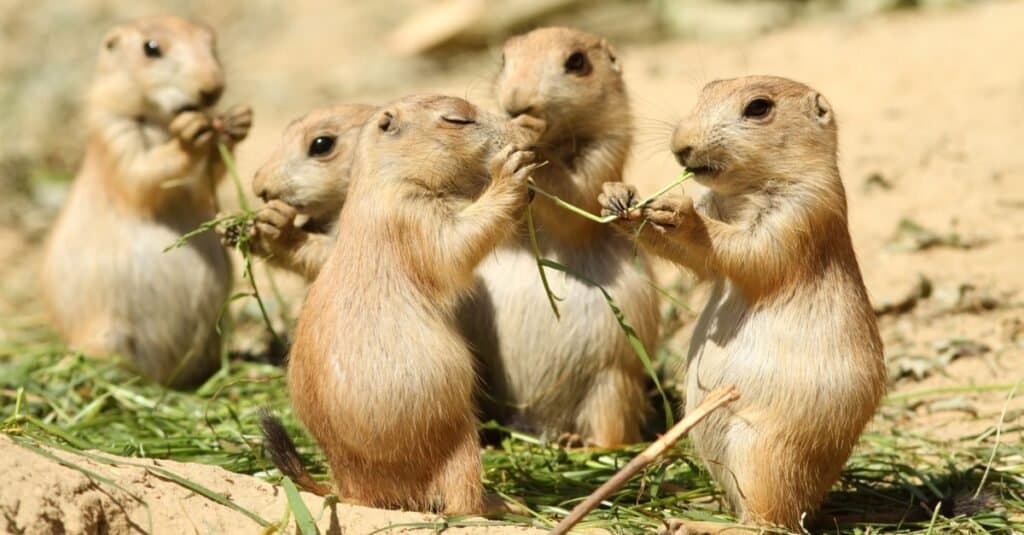
Of the five extant subspecies of prairie dog, three are listed as Least Concern, while two, Utah and Mexican are listed as Endangered
©iStock.com/HenkBentlage
While the exact numbers of these animals are not quite known, population numbers did fall sharply in the 20th century from habitat loss, disease, and deliberate extermination. The white-tailed, black-tailed, and Gunnison’s prairie dogs are still classified as least concern by the IUCN Red List, but the Utah and Mexican prairie dogs are both highly endangered and at risk of becoming extinct. Unfortunately, there is still not enough protection even on public land to revive numbers back to former levels.
View all 192 animals that start with PPrairie Dog FAQs (Frequently Asked Questions)
What is a prairie dog?
The prairie dog is a type of squirrel with a stout body and short tail. It has strong claws to dig deep, complex burrows in which it lives with a family. These are highly social animals that communicate through touch and complex sounds. They have an average lifespan of three to four years.
Are prairie dogs carnivores, herbivores, or omnivores?
The prairie dog is mostly herbivorous. The bulk of its diet consists of roots, grasses, and seeds, but it also may supplement its diet with insects as well.
How big are prairie dogs?
The prairie dog weighs 1 to 4 pounds and reaches about 12 to 16 inches long (not including the tail, which may add a few more inches).
Where do prairie dogs live?
The prairie dog can be found all across the plains of the western United States and Mexico. Because they inhabit underground burrows, the prairie dogs can be somewhat hard to find.
Are prairie dogs dangerous?
The prairie dog is not dangerous, but they can do damage to the local landscape.
Will prairie dogs attack humans?
No, the prairie dog will usually try to run away and hide from people at the first sight.
Do prairie dogs make good pets?
Unless it’s unable to survive in the wild, a prairie dog does not generally make a good pet. Even if they have enough living space and a specialized diet, prairie dogs need to socialize with members of their own group. While these pets can sometimes grow to regard people as part of the group, it’s no substitute for real contact with other prairie dogs.
What states do prairie dogs live in?
The prairie dog inhabits almost all of the landlocked western states, from Arizona in the west to Nebraska and Kansas in the east, and from Montana in the north to Texas in the south. It’s also found in the Mexican states of San Luis Potosí, Nuevo León, and Coahuila.
What is the difference between a prairie dog and a groundhog?
The most obvious difference between a prairie dog and a groundhog is their size. Prairie dogs are much smaller than groundhogs, sometimes by as much as 2-3x.
What is the difference between a prairie dog and a gopher?
The main differences between a gopher and a prairie are their size, habitat, behavior, diet, and damage to plants and vegetation. Both rodents are considered a nuisance to many farmers and yards.
What are the differences between a meerkat and a prairie dog?
The greatest differences between a meerkat and a prairie dog include their appearance, burrowing habits, and lifespan.
What is the difference between a marmot and a prairie dog?
The biggest differences between a marmot and a prairie dog include their size, location, and socialization. The marmot is a social or solitary herbivore with a range throughout Asia, North America, and Europe that weighs up to 24 pounds and measures up to 29 inches long. The prairie dog is a highly social creature from North and Central America that weighs between 1 and 4 pounds and grows up to 16 inches including its tail.
What is the difference between a ground squirrel and a prairie dog?
The greatest differences between a ground squirrel and a prairie dog include their size, genera, and location. Ground squirrels comprise several genera, measure from less than 1 pound to 24 pounds and from 7 to 30 inches in length, and live throughout Asia, Europe, North America, and Central America. Prairie dogs only belong to the Cynomys genus, live in North and Central America, and measure from 1 to 4 pounds in weight and 12 to 16 inches in length.
Thank you for reading! Have some feedback for us? Contact the AZ Animals editorial team.
Sources
- Britannica / Accessed May 10, 2021
- National Geographic / Accessed May 10, 2021
- World Wild Life / Accessed May 10, 2021
- One Kind Planet / Accessed May 10, 2021
- Scientific American / Accessed May 10, 2021










